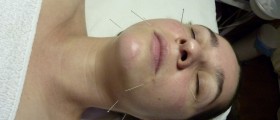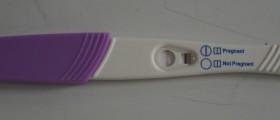
Ovarian cysts are a very common condition in the women. Almost every woman develops this condition once in the lifetime, especially when she is in the childbearing ages. In the body of a woman, there are two ovaries, each on one side of the lower abdomen or pelvis. The main role of the ovaries is to produce eggs that are normally released into the fallopian tube to be fertilized, or if being unfertilized expelled through the vagina during menstruation.
Main characteristics
Sometimes, it happens that in the ovaries or on the surface of the ovaries, certain benign growths appear. These growths are called ovarian cysts and they are actually, as sacs filled with fluid. The size of the ovarian cysts may vary. Typically, small ovarian cysts do not cause any discomfort or pain, and disappear over time without any treatment. Only when the ovarian cysts are larger than 7 centimeters, they may cause pain in the lower abdomen. In the majority of cases, the ovarian cysts are not serious for the overall health of a woman, although sometimes but rarely they can be dangerous and cause cancer.
When the ovarian cysts are detected during a regular check-up, they should be controlled because they tend to grow large. Sometimes, it happens that the ovarian cysts rupture and cause bleeding. Therefore, immediate treatment is highly recommended. The exact cause that is responsible for these benign growths is not yet established, although it is considered that menstrual cycle irregularities are responsible for the occurrence of ovarian cysts.
Types of ovarian cysts
There are two types of functional cysts. Ovarian follicles are specific growths that are produced by the ovaries in order to produce estrogen and progesterone and they help the egg to be released from the ovary. There is also a hormone called luteinizing hormone, which also helps the egg to be released. Ovarian follicles may start to dysfunction when the luteinizing hormone is not produced in sufficient amounts. Therefore, the ovarian follicles do not burst but become ovarian cysts.
Another kind of functional cysts forms when the egg is normally released and when the follicles after bursting start to produce large amounts of progesterone and estrogen, which causes the forming of the white body that gradually fills with fluid and becomes a cyst. Furthermore, there are three types of complex ovarian cysts. Dermoid cysts are the ovarian cysts comprised of the same cells as human eggs, while cystadenomas are the ovarian cysts that are filled with mucous and comprised of ovarian tissue. Endometrioma are the ovarian cysts that are made of the uterine tissue and are formed as the result of endometriosis.

















Your thoughts on this
Loading...